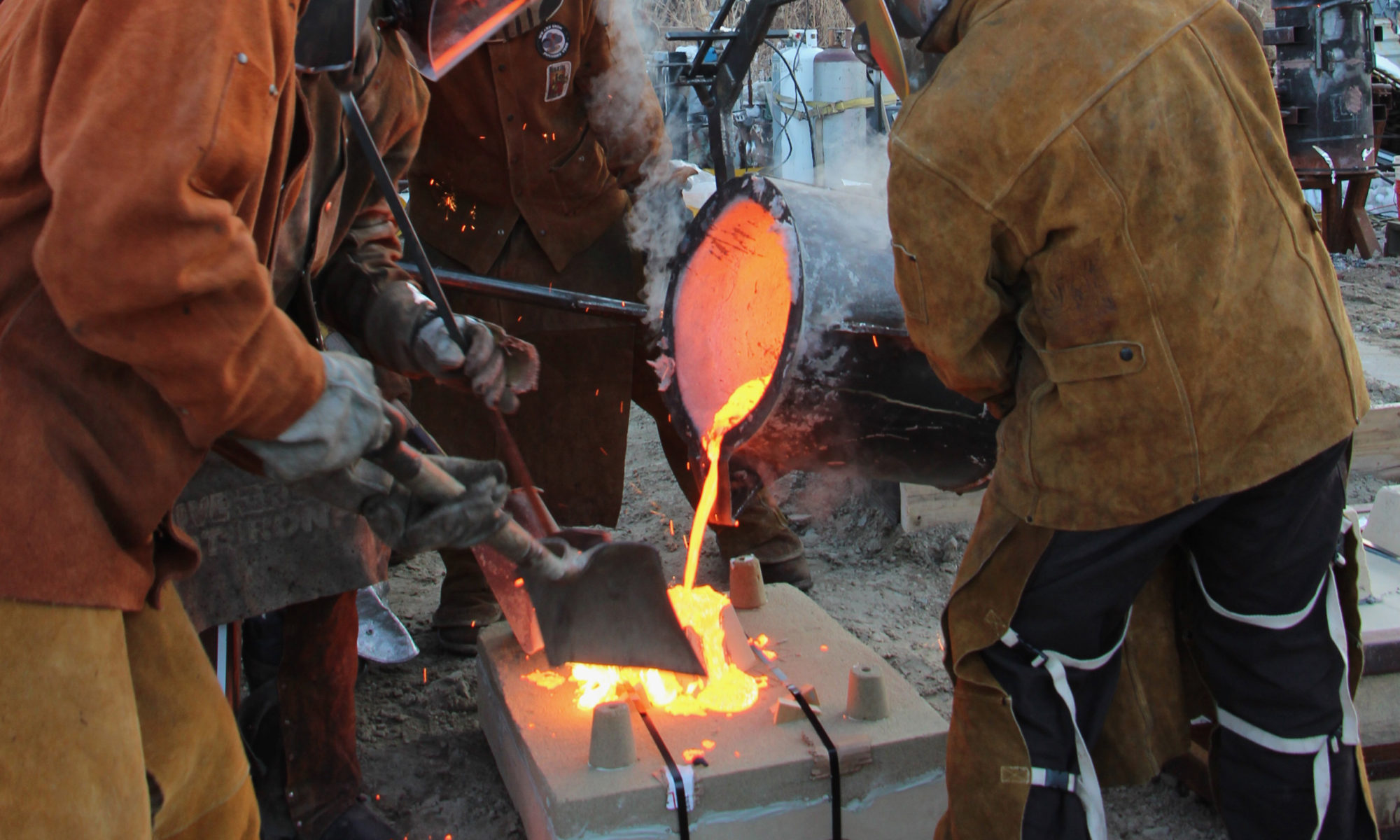An Intro To Foundry Arts
An Interview with The Steel Yard’s Studio Director
We set up a little chit-chat with Ben Filchak, Studio Director, to grill him on all his foundry knowledge. What it is. What it does. And what role foundry art plays at The Steel Yard now and in the future.
Hi Ben! We wanna know more about Foundry Arts and The Steel Yard. Can you explain the process of the foundry? What is it? What can you make?
Well, what’s really cool is that you probably come in contact with something that has been made in a foundry every single day- in your house or home- storm drain, manhole covers, street light bases, plumbing fixtures! But also think of fine art. Those ancient bronze busts in the museum? Also foundry art. Here at the Yard, we can make cups, bowls, cutlery, bottle openers as well as fine art sculptures.
How old is this process?
It’s old! Like real old. Humankind has been melting and working with metal for a VERY long time.
Is it dangerous?
Like all art with fire… it can be very dangerous if you don’t follow the proper safety procedures for yourself and your Pour Crew. It can be a gritty and dirty process. The style of foundry work we do is a smaller scale by comparison. A lot of traditional foundries were massive operations. There are some furnaces that are 200 feet tall!
What do you have to wear to protect yourself?
The main thing we wear to protect our team is leather. Leather is a great material for working in foundry work and is your friend. Under our leathers, we wear natural fibers. We also wear protective face shields, neck guards, gloves, boot guards and chaps! You want whole your body protected. We call it “shingling”… it’s how we get dressed in layers to protect ourselves in case any molten metal is splashed on you. It shouldn’t. But it might.
Can you do foundry work solo or is it in only groups?
Foundry work is a team effort here at the Yard and requires clear communication and attention. Foundry Work can be quite difficult to do on your own. Typically you need more than one person operating a furnace. You need folks to operate the crucibles. And you need a skimmer which is the person who removes the impurities from the molten metal. Plus, we always have spotters on hand to keep an eye on the group and jump in if they’re needed.
What kind of metals do you use?
The Steel Yard has the capability to melt and pour bronze, aluminum, and iron.
How do you melt the metal? How hot does it have to be?
We use two different types of furnaces at The Steel Yard. One, you may be familiar with from the Halloween Iron Pour, Hoss. That’s an iron furnace that uses coke. Which is what you get when you take coal and bake it at a particular temperature and burn off all of the impurities. Iron is a unique metal and requires a HIGH temperature (2,800 degrees!) We use coke as the fuel to start the fire and then use forced air to build the fire and get us up to closer to 3,000 degrees!
The other furnace we use is the new old furnace, Earl, which is much smaller than Hoss. Instead of using coke, this furnace uses a combination of propane and forced hot air. Aluminum melts at 1,200 degrees and the bronze is a little higher at 1,800 degrees.
Can you reuse metal?
Yes, you can! You can melt down the metal and pour it over and over and over.
What do you use to pour the metal? Why doesn’t that burn?
For the Iron Furnace, we use a refractory material that has a heat resistance of at least 3,200 degrees to be sure that the material remains stable under high/harsh temperatures. Examples of this ceramic-based material include cement, refractory blankets, and a host of all industry-specific nicknames and brands.
So a crucible is essentially a large ladle made up of this material that allows you to transport and pour the molten safely.
How do you make a mold? Whats a mold made out of? Why doesn’t that burn?
There are MANY methods of making molds. At The Steel Yard, we primarily use sand. We add the chemical sodium silicate and a catalyst to the sand which hardens it so that it can be carved or hold a shape. Sand has a very high heat resistance- the chemical, for the most part, remains intact.
What role does the foundry currently play at The Steel Yard?
Foundry is a huge part of our identity here at The Yard. Every year during the Halloween Iron Pour we don’t just create artwork with molds… during this event, we create entire performances with the act of pouring as the main attraction. It’s both a beautiful and exciting process. We also work closely with our metal residents to organize community pours and practice this art form.
What would you like to see the foundry department do, and develop into?
I would love to see our foundry department expand in opportunities for our residents AND I look forward to eventually being able to offer courses for the public to enroll in.
Anything thing else to add?
I am just excited. To continue to practice, to involve the community, and to keep learning. Our community truly gives back by teaching US a thing or two.
